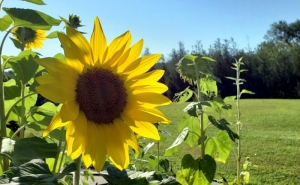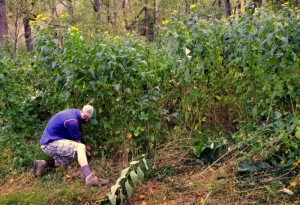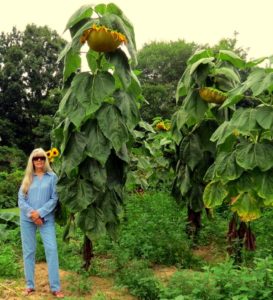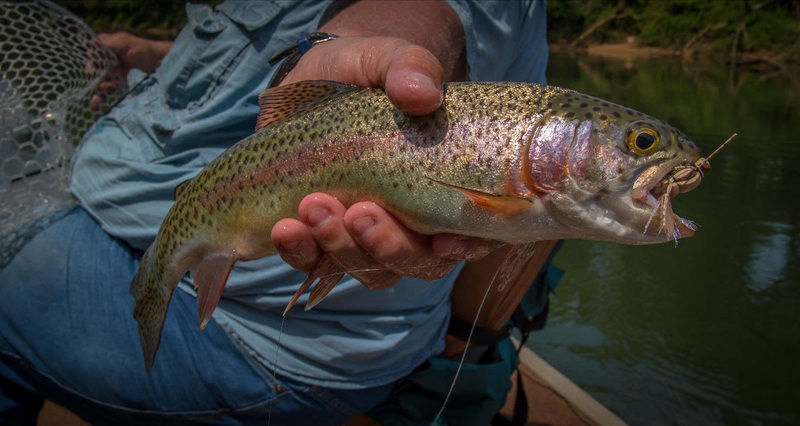The sunflower has long been one of the most familiar garden plants in West Virginia, and many of its uses were passed along to early settlers by their Native American neighbors.
Members of the sunflower species can be found growing in the wild in the Mountain State, and I was lucky to find a pasture full of sunchokes only yesterday!
Here are some facts about the plant that might help you enjoy its beautiful flowers and nutritious foliage even more. They're easy to grow if provided full sun, and they're among the most useful garden plants around.
The sunflower plant is an annual herb with a rough, hairy stem three- to 12-feet high and broad, coarsely toothed, rough leaves three- to 12-inches long.
Its circular head of small flowers can vary from three- to six-inches wide among wild specimens to a foot or more in cultivated varieties.
The flower-heads are composed of many small tubular flowers arranged compactly on a flattish disk. Flowers in the outer row have long, strap-shaped corollas that form the rays of the composite flower.
The genus Helianthus, to which the sunflower belongs, contains about 50 species, chiefly natives of North America. Many are indigenous to the Rocky Mountains, others to tropical America. They are tall, hardy, annual or perennial herbs. Several are grown in gardens and are easy to cultivate in moderately good soil That useful plant of the kitchen garden, the Jerusalem Artichoke or sunchoke, (Helianthus tuberosus), is also a member of the genus.
The name Latin name Helianthus is derived from Helios, the Sun, and anthos, a flower, and has the same meaning as the English name "sunflower." It is popularly supposed that they had been s-named based on the supposition that they follow the sun by day, always turning towards its direct rays.
The sunflower originated in southern and central America and migrated north. Remains of sunflowers dating back 4,600 years have been found in Mexico. In the 1500s, Spanish explorers took sunflowers back to Europe with them, and the species has since spread around the world.
Appalachian families found many uses for sunflowers. New growth was consumed like asparagus, and the seeds were eaten as a tasty snack, used for baking, and fed to birds during the winter months.
Dried sunflower seeds are a rich source of many nutrients, providing 42 percent of the U.S. daily value for protein, 36 percent of dietary fiber, 23–129 percent of many B vitamins, and 234 percent of E vitamins. The seeds also contain high levels of dietary minerals, including magnesium, manganese, phosphorus, iron, and 40–94 percent of the daily value for zinc.
The leaves and stalks were used as fodder, and fibers from the stalks were used to make cloth. Oil from the seeds was used in cooking and for making soap, and the blossoms made a good yellow dye. The tubular-shaped, thin-skinned root vegetable, sunchoke was also prepared and eaten.
Early pioneers had many uses of sunflowers that they learned from Native Americans living near them. In addition to being useful as a source of yellow and orange dye for fabric, the sunflower also comes in handy medicinally, and it was known for its anti-malarial properties.

In regional traditions, sunflowers are seen as symbols of good luck. Planting them around your home and garden will bring fortune your way. It is also said that if you pick a sunflower at sunset then wear it, it will bring you good luck on the following days.
In fairy lore, the sunflower is a source of energy and food for many faes. In many folklore stories dealing with faeries, you'll come across the story of children who go missing after sunflower harvests or, in some stories, children who are found after the sunflowers bloom.
Sunflowers are great for habitats that provide food for birds, bees, and many insects during the flower bloom, and seeds and leaves for rodents in the fall.
How to grow sunflowers
They grow best in full sun. They are remarkably tough and will grow in almost any kind of soil as long as it is not soggy. They perform well in soils that range from slightly acidic to somewhat alkaline (pH 6.0 to 7.5). Once started, they'll easily tolerate droughty conditions. They are so easy to grow that they often plant themselves and will spring up beneath a bird feeder.
To plant sunflowers, space seeds about six inches apart in a shallow trench between one and two inches deep. In sandy soil, plant two inches deep. Cover the seeds and keep watered until they sprout (in about seven to two days). When the second set of leaves appears, thin the plants to about two feet apart. Depending on the variety, they'll mature and develop seeds in 80 to 120 days.
Sow a new row every two to three weeks to enjoy continuous blooms until the first frost. For maximum seed production, space rows two to three feet apart and use tall, seed-producing varieties.
Sign up to receive a FREE copy of West Virginia Explorer Magazine in your email weekly. Sign me up!




